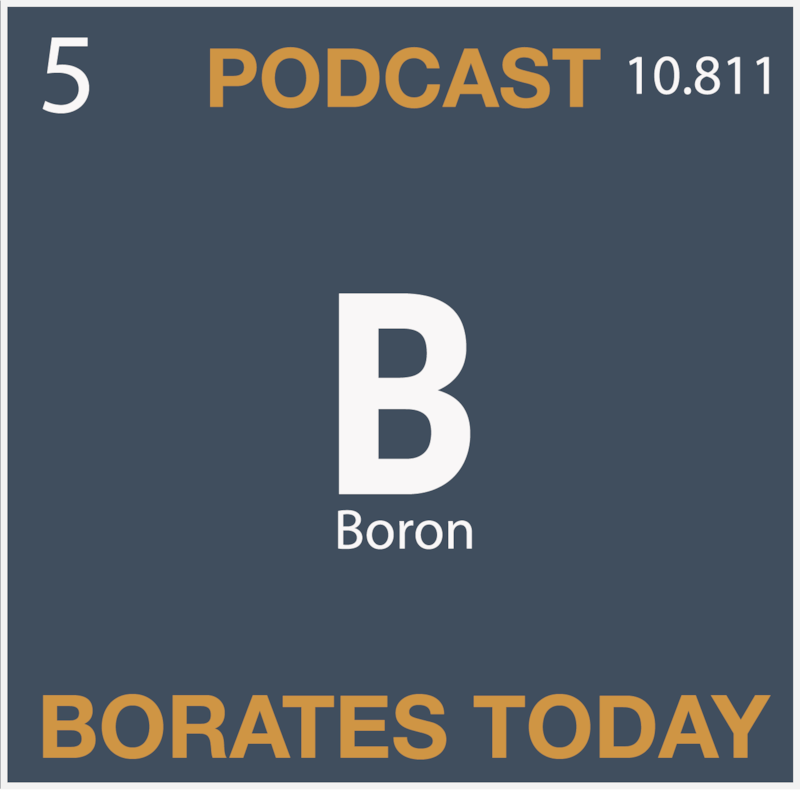
Shownotes
Today, we will look at whether boron is the new carbon.
Hexagonal boron nitride, a single substance material called white graphene, is highly versatile. It has similar properties to carbon-based graphite in terms of molecular weight and strength and has a transparent appearance.
It's used in multiple applications, ranging from electrical insulation to cosmetics. Researchers are now saying that given its properties and versatility, the compound is a potential successor to carbon in nanotube science.
Transcripts
today, we're going to look at whether boron is the new carbon.
Brendan:Hexagonal boron nitride, a single substance material called white
Brendan:graphene, is highly versatile.
Brendan:It has similar properties to carbon-based graphite in terms of molecular weight and
Brendan:strength and has a transparent appearance.
Brendan:It's used in multiple applications, ranging from electrical
Brendan:insulation to cosmetics.
Brendan:Researchers are now saying that given its properties and versatility, the
Brendan:compound is a potential successor to carbon in nanotube science.
Brendan:As researchers investigate the potential of two-dimensional
Brendan:materials, hexagonal boron nitride has emerged as a significant player.
Brendan:hBN, like graphene, is made up of a regular pattern of hexagons.
Brendan:But these hexagons are made up of alternating, boron and nitrogen atoms.
Brendan:Researchers discovered that HBN sheets have exceptional power, stiffness and
Brendan:resilience at extreme temperatures.
Brendan:When these sheets are rolled into nanotubes, their properties are
Brendan:enhanced even further, especially when the nanotubes are closely aligned.
Brendan:These structures are visible to the naked eye, and stuffed with tens of trillions
Brendan:of hollow aligned fibers or nanotubes.
Brendan:Long thin carbon nanotubes were actually first discovered in the early 1990s.
Brendan:Since then, scientists have been perfecting the process of creating
Brendan:these nanotubes in bulk quantities.
Brendan:However it has proven to be a difficult task.
Brendan:In a study in 2020, at the university of Tokyo, engineers created tiny structures
Brendan:from hexagonal boron nitride as part of a project, looking to incorporate nanofibers
Brendan:into membranes for water filtration and blue energy a renewable energy principle
Brendan:in which electricity is generated by ionic filtration of seawater into clean water.
Brendan:Their findings, published in the journal AFCs nano, may well pave the
Brendan:way for the mass production of aligned boron nitride nanotubes or A-BNNT's.
Brendan:Wrong Xiang and colleagues discovered the ability to create high quality boron
Brendan:nitride nanotubes by developing a forest of a few micrometre-long carbon nanotubes.
Brendan:They used the conventional chemical vapor de-position method and layered it with
Brendan:boron and gaseous nitrogen precursors.
Brendan:These were then solidified onto the carbon nanotubes at high temperatures to produce
Brendan:high quality, hexagonal boron nanotubes.
Brendan:MIT Professor of Aeronautics and Astronautics, Brian Wartell, who is
Brendan:taking the research further, says, this is all part of a decade long
Brendan:search for producing carbon nanotubes.
Brendan:Wardle says that aligning the nanotubes makes it easier to utilize
Brendan:boron, nitride nanotube properties in bulk quantities to create physical
Brendan:composites, devices and membranes.
Brendan:Wardle and Acuan's study broadens and scales Xiang's approach,
Brendan:expelling the underpinning carbon nanotubes and leaving the long boron
Brendan:nitride nanotubes alone in place.
Brendan:The researchers were investigating ways to tweak the pressures and
Brendan:temperatures of the chemical vapor deposition method to eliminate the
Brendan:carbon nanotubes while keeping the boron nitride nanotubes unchanged.
Brendan:The team eventually discovered a combination of pressures,
Brendan:temperatures and precursor chemicals.
Brendan:They initially replicated the measures, taken by Xiang to generate
Brendan:the boron nitride coated nanotubes.
Brendan:They also discovered clear crystallites in the microscopic examination
Brendan:indicating the high quality of the boron nitride nanotubes.
Brendan:To prove the versatility of their, methodology, the researchers developed
Brendan:bigger carbon based structures such as a carbon fiber weave, a mat of
Brendan:fuzzy carbon nanotubes and sheets of randomly distributed carbon nanotubes.
Brendan:Before burning the underpinning carbon, the team layered
Brendan:carbon-based specimens with boron and nitrogen precursor chemicals.
Brendan:In every demonstration, they were given a boron nitride scale model
Brendan:of the actual black carbon scaffold.
Brendan:They also demolished BNNT forests, resulting in horizontally aligned
Brendan:fiber films, a favored configuration for integrating into composites.
Brendan:Wardle and his further worked on bulk scale clusters and fibers to
Brendan:strengthen composite materials for space and hypersonic applications,
Brendan:being heat-resistant and more powerful, and for use in window panes
Brendan:and optically transparent devices.
Brendan:A measure of the interest that these studies have gained is shown by the list
Brendan:of industry partners who have contributed to the research with funding and or
Brendan:partner research resources through MITI's NECST (or nano engineered composite
Brendan:aerospace structures) Consortium.
Brendan:These partners include ANSYS Airbus, Boeing, Lockheed Martin, Embraer,
Brendan:Saab AB, and Teijin Carbon America.
Brendan:And that's all from Borates Today.
Brendan:For more information on applications and benefits related to boron and borates,
Brendan:please consult our website borates.today.




